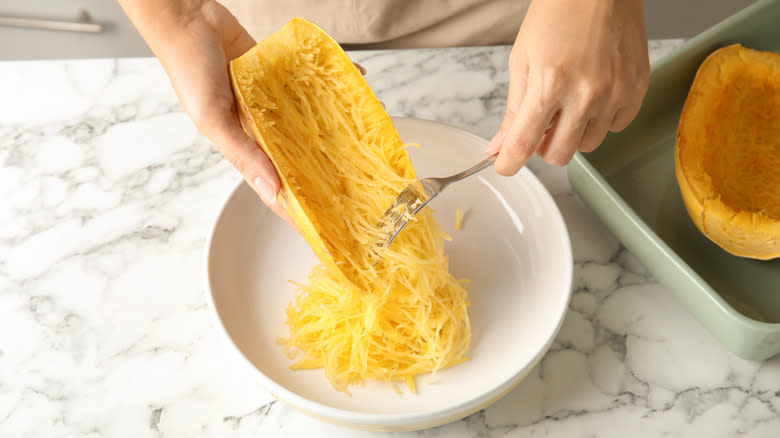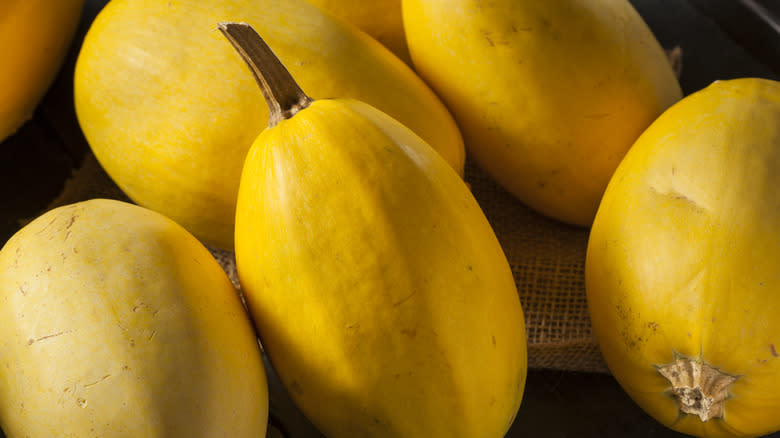When Is The Best Season To Cook With Spaghetti Squash?

While its stringy flesh makes spaghetti squash a worthy substitute for noodles when making pasta dishes, it has its own flavor and charm that deserves to be recognized. When ripe and cooked properly, it has a mildly sweet, nutty taste and an al dente texture that's pleasant to bite into. Simply drowning it in a sauce would be a disservice to these delectable qualities. Instead, roast or bake it to soften the flesh, then pan-fry it in olive oil with salt, pepper, and your favorite herbs. Top it with cheese and enjoy a hearty dish.
The best time to cook spaghetti squash is while it's in peak season, which is from August to December. Spaghetti squash reaches its full maturity during the late summer or early fall and, unlike summer squash, must be allowed to ripen on the vine. However, it shouldn't be harvested too late, either. If spaghetti squash is still on the vine during the start of the first winter frost, it has a much shorter shelf life. Worse, the rind becomes mushy. Farmers work around these conditions by curing immature squash, placing them in a cool, dry area where they're exposed to sunlight for 10 to 14 days.
Although a winter crop, spaghetti squash is available in grocery stores all year round. The curing process helps extend their shelf life for up to 6 months, along with proper storage. This involves keeping them in a dry, dark area with a temperature of 50 to 60 degrees Fahrenheit.
Read more: 13 Simple Tricks To Pick The Best Fresh Fruit Every Time
Protect Spaghetti Squash From Moisture To Prolong Its Shelf Life

When purchasing spaghetti squash, check it for signs of ripeness. It must feel heavy with a hard, golden-yellow rind that is matte, smooth, and free of tender spots. Test the rind by gently scoring a fingernail against it; if it doesn't leave a mark, that means the squash is ripe. Also check that the short, attached stem is brown, dry, and tough rather than green and tender.
If you're not planning on cooking your store-bought spaghetti squash immediately, follow the aforementioned storage conditions. It will stay good for a month at room temperature, provided it's kept somewhere dark, dry, and well-ventilated where the humidity level is 50%-70%. This ensures the produce neither dries out nor starts to rot due to excess moisture. Avoid packing it in with other produce, too, especially those that release ethylene, which is the fruit-ripening gas that causes produce to develop undesirable traits, like a soapy taste in carrots. Rotate the squash regularly as well so that it doesn't develop squishy areas.
Ideally, winter squash shouldn't be refrigerated because the resulting moisture hastens spoilage. Should you have no other option, wrap a whole or sliced spaghetti squash tightly in plastic before placing it in the fridge.
Check your stored spaghetti squash regularly for signs of spoilage. Examine it for mold and any soft spots. Both are indications that the squash is no longer safe to eat and must be discarded.
Read the original article on Tasting Table

